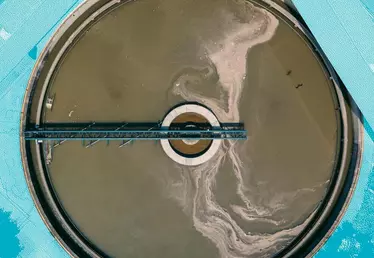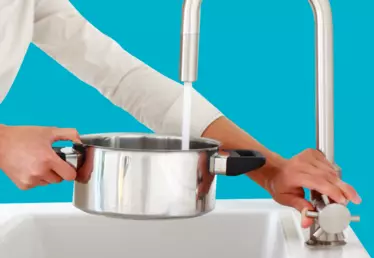

Hero banner custom title
How does water desalination work?
4 min
Just over 50 years ago, Abu Dhabi was a tiny seaside village. What fueled the rapid development of one of the world’s most bustling, ultra-modern metropolises? Water. Desalinated water to be exact.
“Desalinated water makes life itself possible in regions such as Abu Dhabi and similar arid areas,” says Nathalie Réaux, Marketing and Communications Manager at SIDEM, a Business Unit dedicated to large desalination projects within Veolia Water Technologies. Today, more than 117 countries rely on saltwater desalination for potable water and industrial purposes, but none more so than countries in the Middle East. Nearly 100% of Qatar’s drinkable water comes from desalination plants and similarly, 90% in Kuwait and 96% in the UAE. Saudi Arabia has more than 33 desalination plants, representing 20% of worldwide desalinated water production.
Nearly 100% of Qatar’s drinkable water comes from desalination plants and similarly.
How it works
Sea water is pumped in from deep waters far off the coast where water is cooler and cleaner, and is then filtered through several processes ౼ altogether taking roughly 30 minutes. The first filtration removes large objects, such as plastic and other waste, and sealife. Next, a coagulant is added in, causing tiny algae and other suspended particles to bind together until they are large enough to be skimmed off the surface. Finer particles are then filtered out as the clarified water seeps through layers of sand in the final pretreatment phase
At this point, the water undergoes reverse osmosis where the salinated water is pumped through extremely fine membranes at very high pressure, trapping the salt and letting only the smaller water particles through. Half of the water becomes demineralized fresh water, while the other half, called brine, contains roughly twice as much salt.
Further treatment depends on where the water will be used. Water intended for industrial and agricultural use needs no further treatment and is pumped out of the treatment plant. “Potable water needs to be remineralized and pH levels need to be controlled in order to comply with all relevant standards,” says Réaux. “It sounds strange that, after all that, we add salt and minerals back in, but pure H2O is bad for our health and pipes.”
Return to the sea
“We are industrializing a natural process,” says Réaux, referring to the way seawater naturally evaporates into clouds and returns back to the sea when it rains. “The water we produce is used in homes and cities and returns to the land, rivers and the sea.” The brine returns to the sea as well. Because of the high salt concentration, brine is pumped out far from shore where currents quickly dilute it in the vast sea. “In order to identify the best area to reject the brine, we study the currents and water flow to ensure that the highly concentrated water won't disturb the surrounding environment.”
An eye on the future
While the technology is impressive, there are significant limitations to desalination. For example, plants generally take up a lot of land near the seashore, energy consumption is not insignificant and the cost of desalinated water can be considerably higher than other types of water. To offset these consequences, Veolia developed the BarrelTM , a compact version of the reverse osmosis part of the desalination plant. The “plug and play” solution consumes less energy and can reduce total plant square footage by as much as 25%. “This is critical because the seashore is getting more and more crowded, particularly in the Gulf Coast region,” says Réaux. “The Barrel produces the same quantity of water on less land.” It also digitally monitors membranes to reduce blockage and allows users to schedule preventative cleaning and maintenance. By optimizing time and materials, plants run efficiently, lose less energy and therefore shrink their carbon footprint.
40% of the global population live less than 100km from the sea.
While there is no perfect solution to water scarcity, desalination delivers life-giving water to some of the driest regions on the planet. “As our climate continues to change and water resources become scarcer, different regions have begun to consider, test and even increase production of desalinated water.” And with 40% of the global population living less than 100km from the sea, it just might be the answer.
Share it:












